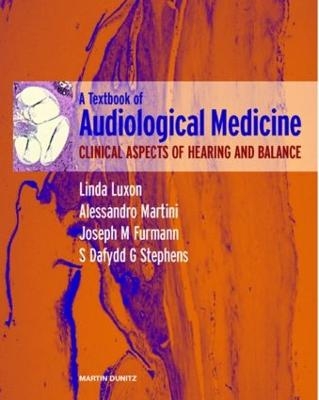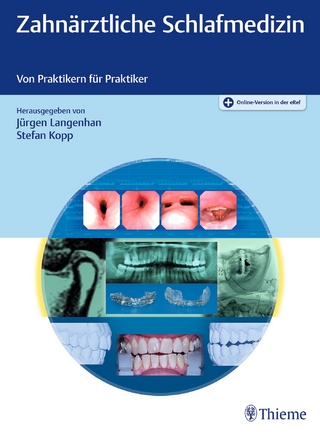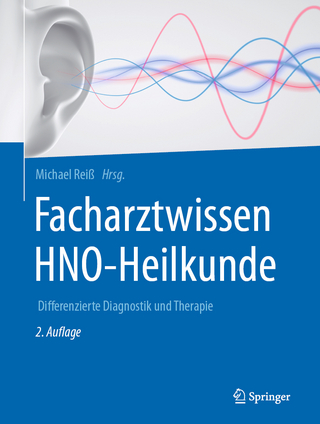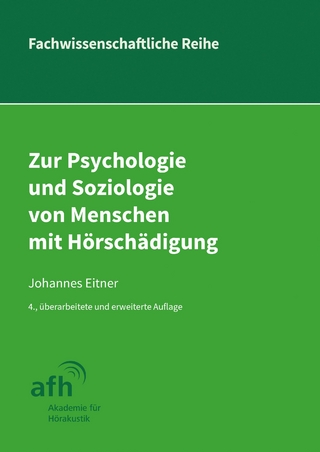
A Textbook of Audiological Medicine
ISIS Medical Media Ltd (Verlag)
978-1-901865-34-9 (ISBN)
Audiological medicine is a relatively new specialty spanning the investigation, diagnosis and medical management of hearing and balance disorders. Recent years have seen its growth as a separate medical discipline, although its practice depends not only upon a clear understanding of the basic sciences relevant to auditory and vestibular function, but also upon experience and knowledge in a wide range of clinical disciplines relevant to hearing and balance disorders, including genetics, immunology, pediatrics, geriatrics, neurology, otolaryngology, ophthalmology, psychiatry and general internal medicine. A Textbook of Audiological Medicine integrates the science and medicine of auditory and vestibular disorders, providing the first comprehensive textbook on the subject. There are five main sections; the first deals with both the auditory and vestibular systems, and then each system is considered in terms of the relevant basic sciences and clinical disorders.
Linda M Luxon is Professor of Audiological Medicine, Great Ormond Street Hospital London, UK; Joseph M Furman is at the Department of Otolaryngology, The Eye and Ear Institute, University of Pittsburgh School of Medicine, USA; Alessandro Martini is at the Istituto di Clinica ORL, Università di Ferrara, Italy; and S Dafydd G Stephens is at the Welsh Hearing Institute, Cardiff, Wales
Section I: Fundamentals of audiological and vestibular medicine. Anatomy of peripheral auditory and vestibular systems. Aging in the auditory and vestibular systems. Pathology of the ear. Genetics of auditory and vestibular disorders. Immunology of cochlear and vestibular disorders. The epidemiology of hearing and balance disorders. Radiology of auditory and vesitibular disease. Ethics, law and related matters. Section II: Audiology. Development and plasticity of the human auditory system. Physiology of the auditory system. Central auditory anatomy and function. Acoustics, measurement of sound and calibration. The threshold of hearing. Psychoacoustic auditory tests. Otoacoustic emissions. Human auditory electrophysiology. Measurements of inner ear fluid pressure and clinical applications. The auditory processing of speech. Speech and language development in normally hearing and hearing-impaired children. Section III: Auditory disorders and their management. Screening programs for hearing loss. Clinical and audiometric assessment of hearing. Assessment of hearing-impaired children. Otitis media with effusion in children (Glue ear). Disorders of the inner ear in children. Management of the hearing-impaired child. Cochlear implants for adults and children. Disorders of the inner ear in adults. Noise-induced hearing loss. Central auditory disorders. Audiological rehabilitation. Auditory amplification in adults. The pathophysiology and assessment of tinnitus. Management of the tinnitus patient. Aspects of the paracuses. Psychological aspects of hearing impairment and tinnitus. Surgical management of hearing impairment in audiological medicine. Section IV: Vestibular science. The pathology of the vestibular system. Function and dysfunction of the vestibular system. Effects of aging on control of stability. Vestibular influences on cardiovascular control during movement. The physiology of the vestibulo-ocular reflex. Instrumentation and principles of vestibular testing. Clinical application of vestibular laboratory testing. Posturography. Emerging technologies. Section V: Vestibular disorders and their management. Normal and abnormal balance. Normal and abnormal eye movements. Peripheral vestibular disorders and diseases in adults. Neurological causes of balance disorders. Falls. General medical causes of disequilibrium. Balance disorders in children. Psychiatric consequences of vestibular dysfunction. Medical management of balance disorders and vestibular rehabilitation. The role of surgery in the management of the dizzy patient.
| Erscheint lt. Verlag | 19.12.2002 |
|---|---|
| Zusatzinfo | 565 Line drawings, black and white; 50 Illustrations, color; 725 Illustrations, black and white |
| Verlagsort | Oxford |
| Sprache | englisch |
| Maße | 216 x 280 mm |
| Gewicht | 2472 g |
| Themenwelt | Medizin / Pharmazie ► Medizinische Fachgebiete ► HNO-Heilkunde |
| ISBN-10 | 1-901865-34-7 / 1901865347 |
| ISBN-13 | 978-1-901865-34-9 / 9781901865349 |
| Zustand | Neuware |
| Haben Sie eine Frage zum Produkt? |
aus dem Bereich


